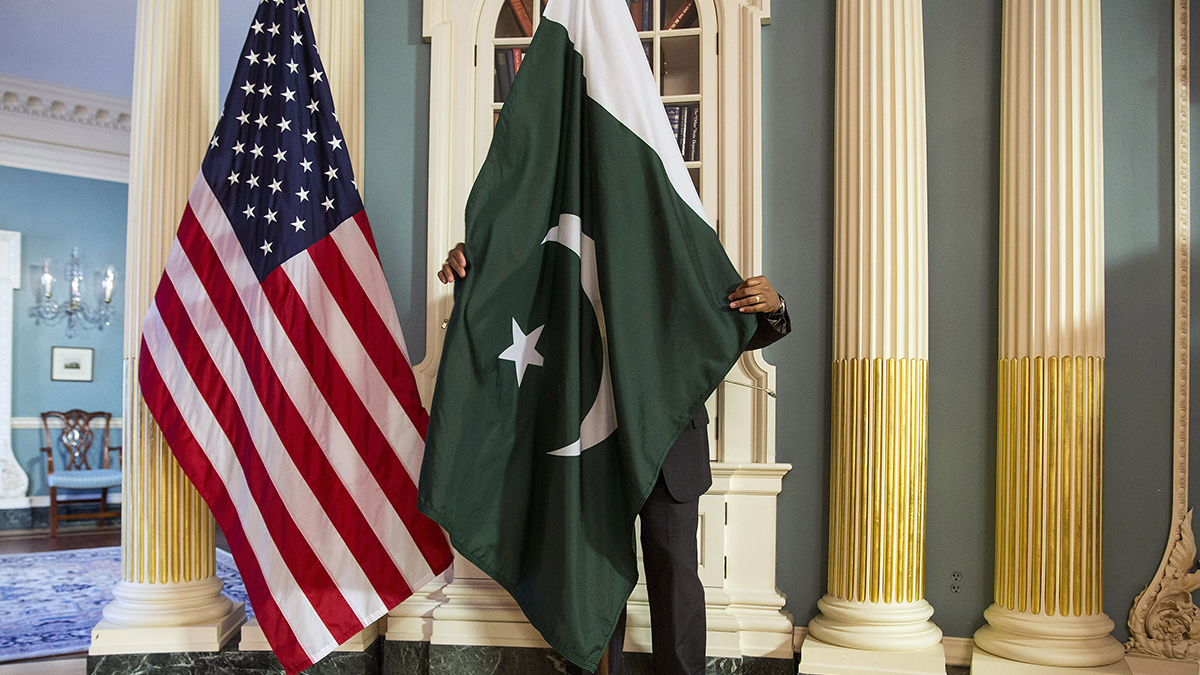The calculation in Pakistan is going to change significantly with Donald Trump’s return to power, bringing uncertainty to Islamabad’s foreign policy. Pakistan is facing a US administration that has been both a partner and a rival in the past, and this time, the relationship may become even more unpredictable.
After the US withdrew from Afghanistan in 2021, the relationship between Washington DC and Islamabad has undergone many changes. Now, with Trump back in office, Pakistan may need to adjust its diplomatic priorities even more.
A shift in priorities
The departure of the Biden administration and the return of Trump brings a shift in US foreign policy priorities leaving Pakistan on the sidelines. Under Biden, US-Pakistan relations were marked by cautious engagement, focussing on regional stability and counterterrorism, but the relationship never returned to the prominence it had in earlier decades.
Maleeha Lodhi, Pakistan’s former ambassador to the US, described this period to Geo TV as one of “benign disengagement.” Pakistan was no longer a key player in US foreign policy, especially after the US withdrawal from Afghanistan. Pakistan’s role in US counterterrorism operations decreased, leaving the country struggling to redefine its position in the world.
With Trump back in power, Pakistan may face a more unpredictable diplomatic relationship. Trump’s “America First” policy, which focussed on US interests over multilateral engagement, could complicate Pakistan’s foreign policy decisions.
Impact Shorts
More ShortsWithout a structured and cooperative relationship, Pakistan may need to make more concessions for little diplomatic gain. This disengagement could also reduce Pakistan’s ability to influence US policies on important regional issues like counterterrorism and South Asian security.
The Trump factor
Trump’s foreign policy was previously known for being unpredictable, relying on personal diplomacy, and focussing more on bilateral agreements than multilateral ones. For Pakistan, this could mean that its relationship with the US might depend more on the personal connection between leaders than on formal diplomatic channels or long-term strategic partnerships.
While Trump’s views on global issues might not change much from his first term, his approach to Pakistan could be influenced by personal gestures.
During Trump’s first term, he and the then-Pakistani Prime Minister, Imran Khan, had a working relationship. However, that was in the past and therefore Pakistan’s foreign policy under a second Trump administration could be one of waiting for signals from Washington, trying to figure out how its interests align with Trump’s unpredictable decisions.
Balancing US and China
One of the most important parts of Pakistan’s foreign policy after Trump’s second inauguration is managing the delicate balance between the US and China. While Pakistan has traditionally been aligned with the US, it is becoming more connected to China through its strategic partnership and the China-Pakistan Economic Corridor (CPEC).
The growing rivalry between the US and China, especially over trade and technological dominance, puts Pakistan in a tough spot. In this situation, Pakistan has a slippery road ahead needing to manage the tensions between these two powerful nations while avoiding getting caught in their conflict.
If the US adopts a more aggressive foreign policy under Trump to curb China’s rise, it could affect Pakistan, particularly concerning the future of CPEC. While Pakistan’s relationship with China is vital for economic growth and infrastructure development, there are risks involved in getting too close to Beijing, especially if the US imposes sanctions or trade restrictions because of Pakistan’s growing ties with China.
The India factor
According to Munazza Siddiqui in Geo TV, another big challenge for Pakistan in managing its foreign policy under Trump will be the growing strategic partnership between India and the US.
Over the last decade, India-US relations have become stronger, marked by increased defence cooperation, intelligence sharing and joint military exercises. Under Trump, this trend is expected to continue, with India seen as a key partner in the US’s strategy to counter China in the Indo-Pacific region.
For Pakistan, the strengthening of India-US ties presents a major challenge given the pressure from Washington on Islamabad to align more closely with India on counterterrorism efforts and countering China’s influence in the region.
Opportunities and challenges
Pakistan’s foreign policy under President Trump’s second administration is likely to face a mix of challenges and opportunities. Pakistan might aim to position itself as a bridge between the US and China, a strategy that could help it avoid antagonising either side.
Strengthening economic ties with both nations could serve as an additional safeguard, ensuring Pakistan remains relevant in the region. Siddiqui suggests that Pakistan will also likely leverage its relationships with Iran, Bangladesh and Afghanistan to demonstrate its diplomatic influence amid global power struggles.
Road ahead
Trump’s return to the White House marks a new chapter in US-Pakistan relations bringing both risks and opportunities. Pakistan faces major challenges in shaping its foreign policy in this changing geopolitical scenario, but there are also chances for strategic engagement with both the US and China. In the end, Pakistan’s success in handling these shifting dynamics will determine where it stands in the global order.
)